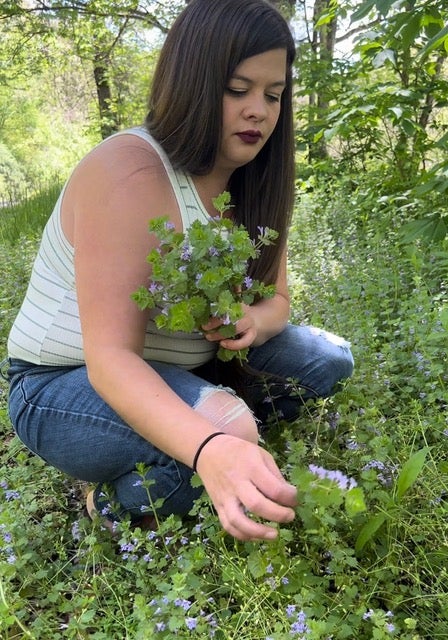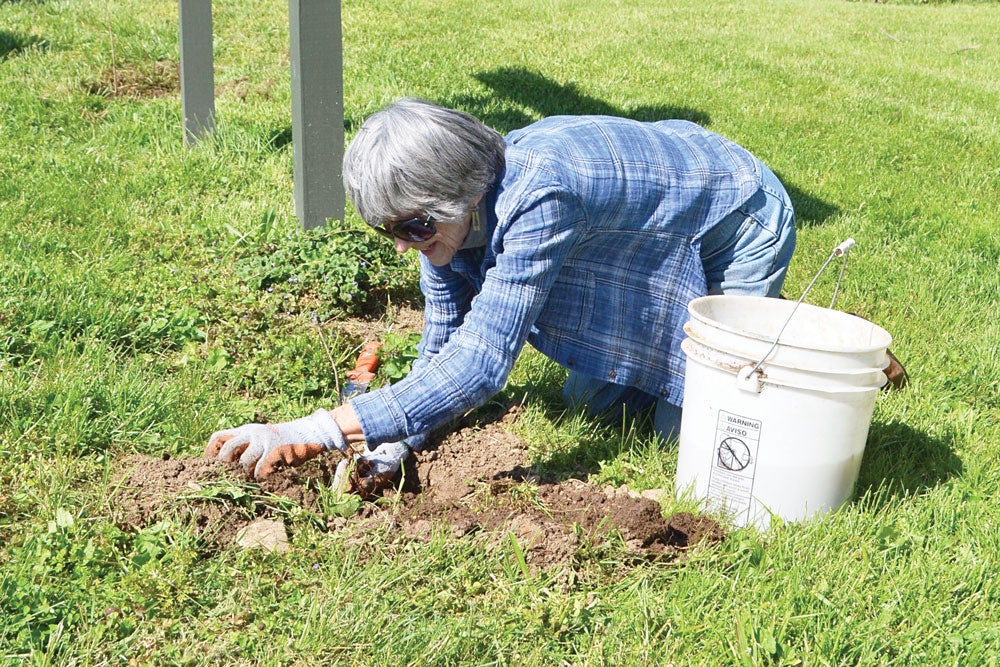Teas and tinctures of the Appalachian forest
Published 11:08 am Tuesday, May 16, 2023

- Whitney Johnson, the Appalachian Forager, gathers wild plants in eastern Kentucky. (Photo courtesy of The Daily Yonder)
|
Getting your Trinity Audio player ready...
|
By Liz Carey
The Daily Yonder
For generations, the Appalachian forests have held a veritable pharmacy for those who know where to look.
From sassafras to mountain mint, wild herbs have helped cure headaches, fevers, nerves and other maladies. Modern day foragers and herbalists continue the traditions either passed down to them from others, or picked up through study and experience.
Patricia Kyritsi Howell, author of Medicinal Plants of the Southern Appalachians, has been using her fascination with herbs and wild plants to help others since she was in college.
Howell said her fascination with herbs started after reading “Little House on the Prairie” as a little girl. Later, as a teenager, she started harvesting wild herbs and making teas and tinctures. In college, at Evergreen State College in Olympia, Washington, she ran a business selling a tea for menstrual cramps that she brewed by the gallon in her dorm room.
Howell said teas can be made from many different herbs and wild plants using one part dried herbs (or two parts fresh herbs) to 32 parts water. Once the water comes to a boil, pour it over the herbs and let them steep for 10 to 15 minutes, she said.
For her, one of the best spring teas is a dandelion tea. Using dandelion leaves, collected before the nights stay too warm, she said, will produce a bitter tea that helps with the function of the liver. Teas made from dandelion and sassafras have historically been used to cleanse a person’s system after a long winter without fresh green vegetables, she said.
Long-held traditions
Howell said the recipes for the teas come from generations of women foraging herbs and trying them out.
“Many times, they’d find that something worked on something and would continue to use it,” she said. “They would make the teas out of what they found and make the connections between what worked and what didn’t. It wasn’t something codified so much as passed down orally and anecdotally.”
Cara-Lee Langston, founder of Wildcraft Kitchens, said many of the plants native to Appalachia can be used in healing teas.
“Teas can be made with pretty much any culinary herb or spice,” she said in an email interview. “Cinnamon, clove, cayenne, and ginger are all warming and great for circulation. Mint and ginger are well known for settling the stomach. Rosemary, thyme, and sage help to dry mucus. Lavender and chamomile are soothing nervine relaxants and can promote healthy rest. Chamomile is also a slightly bitter herb and bitters help to promote healthy digestion.”
Langston said she especially likes making teas in the spring.
“I enjoy making spring tonic teas with native plants that are sustainable to harvest such as spicebush,” she said. “I typically gravitate toward using non-native invasive and naturalized species that grow more prolifically. One example is Ground Ivy, Alehoof, or Creeping Charlie which is an aromatic plant in the mint family – a great tasting herb that can soothe the stomach, addresses cold/flu-like symptoms and was traditionally used to make grut—an herbal beer.”
Sassafras tea
One of the best known Appalachian teas is probably sassafras tea, Langston said. Using the roots, twigs and young branches of the sassafras tree, one can make a “spring tonic” that cleanses the body after a long winter, she said.
“Many herbalists consider Sassafras to be an alterative or blood-cleansing herb,” she said.
While Appalachians have been drinking sassafras for years, the FDA has issued warnings about the use of Safrole (a compound isolated and synthesized from sassafras). Langston cautioned that changes in diet can cause reactions to anyone at any point in their life and that special care, and consultations with a healthcare provider, are a good idea when introducing new foods and herbs into your diet.
The art of foraging
Whitney Johnson, a Blaine, Kentucky native, who some may recognize as the Appalachian Forager from TikTok and Instagram, said teas can cure a number of ailments.
“My favorite wild plants and herbs for teas would have to include yarrow, dandelion, nettle, henbit, goldenrod, and chamomile,” she said. “Yarrow is good for gut and menstrual health; dandelion is good for UTIs, liver or kidney health, and blood sugar; nettle tea is good for pain, allergies, blood pressure, and immune support; henbit is good for aches, pains, and inflammation; goldenrod is good for urinary health, cholesterol, and respiratory issues; and chamomile is good for relaxation, reducing stress, and stomach issues.”
Johnson said she started foraging as a child and learned through researching and playing outside.
“I’m primarily self-taught. I have read until my eyeballs have nearly exploded and researched until my fingers about fell off,” she said. “The main thing is to practice and go outside as much as possible.”
This time of year is ripe with wild herbs and plants for the picking, she said. But, it’s important to be careful and not to take too much. Foragers should never take more than they will need, and should never pluck the whole plant unless they intend to use the roots. Also, she said, be aware of animal droppings, and stay away from plants along the roadside that may have been treated or sprayed with pesticides.
Books like Howell’s, as well as advice from local experts and herbalists can help get one started making herbal healing teas.
As Johnson said, the most important thing is to just get outside and start picking.
“Kentucky is plum loaded with tasty and medicinal wild plants, so I suggest you get out there and start learning,” she said. “It’s fun and free!”





